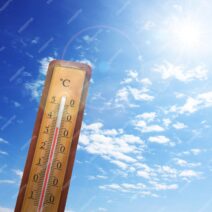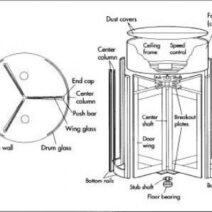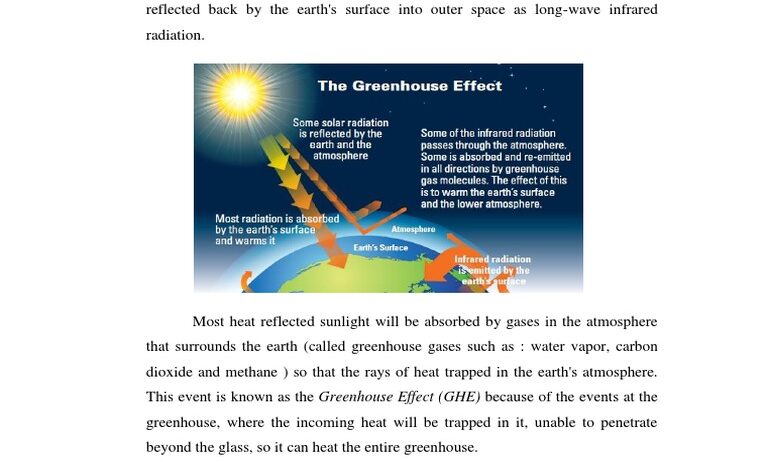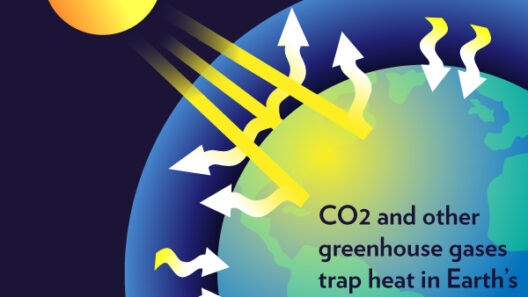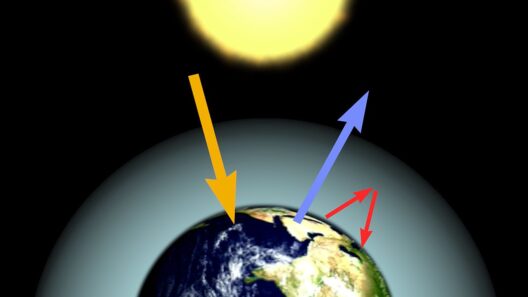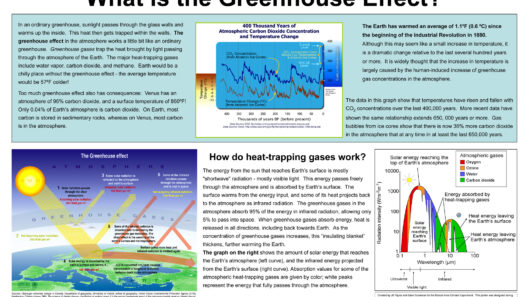The Earth’s climate system is complex, governed by a multitude of interlinked mechanisms. Two critical concepts that frequently surface in discussions about environmental science are the greenhouse effect and global warming. While these terms are sometimes used interchangeably, they denote distinct phenomena with varying implications for our planet’s future. Understanding their differences is paramount in addressing climate change effectively.
The greenhouse effect is a natural process that warms the Earth’s surface. When the sun’s energy reaches the Earth, some of it is reflected back to space, and the rest is absorbed, heating the planet. In turn, the Earth emits this absorbed energy in the form of infrared radiation. Greenhouse gases, including carbon dioxide, methane, and water vapor, trap some of this infrared radiation in the atmosphere, effectively insulating the planet and retaining heat. This phenomenon is essential for maintaining temperatures conducive to life; without it, the Earth would be inhospitably cold.
Conversely, global warming is the observed and projected increase in the average temperature of the Earth’s atmosphere and oceans. Spurred primarily by human activities—especially the burning of fossil fuels and deforestation—global warming results in an elevated concentration of greenhouse gases. The surge in these gases amplifies the greenhouse effect, leading to higher temperatures over time. While the greenhouse effect is a natural and necessary process, global warming signifies a troubling manmade escalation.
Understanding the nuances between these terms is vital for comprehending their implications on climate action and policy-making. A clearer grasp of the greenhouse effect and global warming can elucidate why mitigating climate change requires a multifaceted approach.
Factors Influencing the Greenhouse Effect
The greenhouse effect is dependent on various factors that can complicate its dynamics. Foremost among these are the types and concentrations of greenhouse gases present in the atmosphere. Carbon dioxide and methane are the most prevalent and potent greenhouse gases, each with varying lifetimes and global warming potentials. For instance, methane is approximately 28 times more effective than carbon dioxide at trapping heat over a 100-year period, although it dissipates more quickly.
Natural processes also play a role in the greenhouse effect. Oceans, forests, and soil act as carbon sinks, sequestering CO2 and moderating atmospheric concentrations. Changes in land use and destruction of these ecosystems release stored carbon, exacerbating the greenhouse effect.
Additionally, human-induced activities significantly alter the balance of these natural processes. Industrial emissions, agricultural practices, and the reliance on fossil fuels contribute to an increased concentration of greenhouse gases, intensifying the greenhouse effect and propelling the global temperature rise.
The Vicious Cycle of Global Warming
Global warming manifests as a series of interrelated phenomena, each feeding into the next, creating a vicious cycle that leads to more severe environmental changes. Rising temperatures contribute to the melting of ice caps and glaciers, which in turn raises sea levels. This can lead to coastal erosion and increased salinity in waterways, adversely affecting ecosystems and human settlements.
Moreover, as global temperatures rise, we observe more extreme weather events such as hurricanes, heatwaves, and droughts. These changes not only disrupt local ecosystems but also have profound impacts on agriculture and food security. For example, prolonged droughts can diminish crop yields, leading to food scarcity and increased reliance on food imports, further straining global resources.
Additionally, the interrelationship between global warming and biodiversity cannot be overlooked. Many species are unable to adapt quickly enough to the pace of climate change, leading to shifts in population dynamics, habitat destruction, and potential extinction. This biodiversity loss affects ecosystem resilience and disrupts processes vital for human survival, such as pollination and clean water supply.
Strategies for Mitigation
Addressing the impacts of the greenhouse effect and global warming necessitates a robust and multifaceted strategy. Policymakers, scientists, and activists must prioritize reducing greenhouse gas emissions to curtail the effects of global warming. Transitioning to renewable energy sources, such as solar, wind, and hydroelectric power, is imperative. These alternative energy forms emit little to no greenhouse gases compared to fossil fuels, making them essential in combatting climate change.
In addition to shifting energy sources, enhancing energy efficiency in buildings, transportation, and industries can minimize energy consumption and reduce emissions. Incorporating sustainable practices into agriculture, such as agroforestry and permaculture, can also play a significant role in sequestering carbon while maintaining food production.
Finally, reforestation and afforestation efforts can help restore ecosystems that act as critical carbon sinks. Protected areas, wildlife corridors, and marine reserves also contribute to preserving biodiversity, thereby aiding climate resilience.
The Future of Climate Action
Comprehensively addressing the challenges posed by greenhouse gas emissions and global warming involves collaborative action across governments, industries, and communities. Raising awareness about the differences between the greenhouse effect and global warming can empower individuals to make informed decisions, advocate for sustainable policies, and participate in environmental stewardship. As society moves toward a more sustainable future, recognizing the significance of these interconnected concepts will be crucial in fostering effective climate action and ensuring a livable planet for generations to come.
